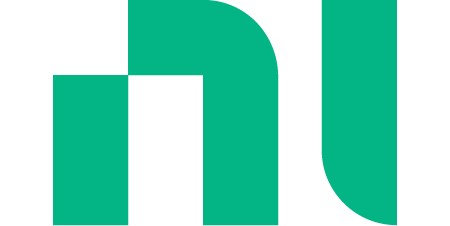Necessity is the key to invention. This is the statement that has been the basis of most of the inventions and innovation that has taken place in the world. There have been many stories of success that are the result of need, need to bring about change, and need to get the best technologies for solving the most complicated problems. NI aka National Instruments Corporation is also one of the success stories whose foundation based on the need to turn things simpler and make work easier for people.
National Instruments Corporation
NI is an American technology company which is based in Austin, Texas. The company is known for its automated test equipment and virtual instrumentation software. The popular software products from NI include LabWindows/CVI, LabVIEW Communication System Design, DIAdem, VerusStand, NI TestStand, NI Switch Executive, NI Multisim, etc. NI builds programs to help people do their programming even faster and better by providing them with easy to use automated programming environment.

For example, LabVIEW is a graphical development environment, whereas the LabVIEW Communications System Design Suite is built to provide its users with faster deployment of the communication systems. Similarly, NI’s NI DIAdem is used for data management, and NI VeriStand is designed for real-time testing. The company has also introduced many hardware products as well. These products include NI CompactRIO, NI roboRIO, NI CompactDAQ, STS, PXI and PXIe Platforms, etc.
History
NI’s history is as old as forty years. The company was founded in 1976 by three colleagues, James Truchard, Jeff Kodosky, and Bill Nowlin, working at the University of Texas at Austin Applied Research Laboratories. The three co-founders were part of a team that was researching for the US navy during the 1970s. While working together, the three realized that the technology they were using was quite outdated and took way too much time to complete a task. The three thought of developing a new data analysis product that would be faster and would be easy to use.
For the purpose of developing a new product, like many other technology companies, the three founded their company working in the garage of James Truchard in 1976. After a lot of brainstorming and discussion over names like Longhorn Instruments and Texas Digital, they finalized National Instruments (NI) for their new company.
The three were still working at the university and were handling their company work through the garage only. They took a loan of $10,000 from the Interfirst Bank. For the marketing of their company they used the method of cold calling and bagged their first contract from San Antonio based Kelly Air Force Base. They also hired Kim Harrison-Hosen for all their office work, and by the end of the year, they had successfully connected with three clients.
In 1978, the three moved the company to a real office at Burnet Road in Austin. The co-founders focused on the marketing of their company, and through mails and cold calling, they were able to get orders worth $400,000 in the next two years. In 1980, the profits made the co-founders confident enough to leave their jobs and focus solely on company operations.
NI then started to take up new projects so that to expand the scope of the company. By 1983, the company had changed two offices, and in the same year, it produced its first GPIB board used to connect instruments to IBM PCs. The latest discovery of that time was the Macintosh computer, and NI wanted to take advantage of this opportunity.
NI, in 1986, introduced its first flagship product, i.e., LabVIEW graphical development platform for the Macintosh computer. Later, in 1991, NI got the patent for LabView. This software was easy to use as the programmers did not have to write the code, but they could program graphically by connecting the icons given. After Macintosh, the company released LAbWindows for Microsoft DOS. In 1987, NI opened its first international office in Tokyo, Japan. NI also launched the National Instruments Alliance Partner program to connect with third-party developers and engineers to enhance the capabilities of NI products.
NI had $100 million in annual sales in 1993, and by 1998, the company had hired 1000 employees, such that they had to move to a new office. This new office boasted an employee-friendly environment that included play areas and a gymnasium for its employees.
Though NI had already appeared on the web, at the beginning of 2000, the company started its website with the domain ni.com. With the widespread of the internet, NI started to work on web technologies. It also launched the NI Developer Zone, where users could access the sample codes and sample programs and seek help from the NI engineers. The company launched its first international manufacturing unit in Debrecen, Hungary, and by 2006, it had around 40 sales offices opened globally. In 2013, NI acquired Digilent Inc.
The CEO of the Company

Eric Starkloff is the current CEO of NI. He is also one of the board members of NI and the President of the company. Starkloff is a graduate in electrical engineering from the University of Virginia. He started his career with NI as an application engineer and has been working at NI for more than twenty years.
NI Today
NI is one of the biggest technology companies in the world. After moving to different size offices, the company now headquarters in Austin, Texas. Michael E. McGrath is the current Chairman of the company, and Eric Starkloff serves as the CEO at NI. The company has got over 7500 employees globally, and the annual revenue of the company, as of 2019, is recorded to be $ 1.353 billion. NI went public in 1995 and is listed on NASDAQ as NATI.

Yashica is a Software Engineer turned Content Writer, who loves to write on social causes and expertise in writing technical stuff. She loves to watch movies and explore new places. She believes that you need to live once before you die. So experimenting with her life and career choices, she is trying to live her life to the fullest.